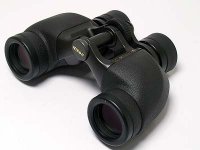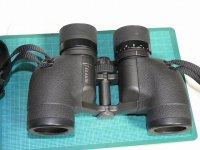I was being only slightly facetious about random serial numbering. We tend to assume that serial numbers are necessarily serial, that is, assigned in strict, ascending numerical order. Back in the days of Henry Ford they were.
VIN numbers are an excellent example of how modern enumeration of objects is done. The fundamental principle is that there is an arbitrary connection between the number/code/alpha-numeric sequence and the object to which it is assigned. Exactly like language, where there is no necessary connection between "binocular" and this fetish object we use for seeing far things near. Thus the fallacy that a given SE is "newer" than mine because its serial number is 42 numbers higher. It is more likely that within a given batch (say, 600 units) a sequence of numbers is assigned out of manufacturing sequence (particularly if two assembly lines run in parallel). In the case of, say, iPhones, where an entire assembly floor is dedicated to one product, how do you assign serial numbers? You don't; you assign the equivalent of a bar code to each unit; that unit has no identity, per se, until it is assigned a code, just as a car is utterly untrackable without a VIN. If you have done a warranty return with Nikon knows that the entire transaction is handled using two arbitrarily associated numbers: the work order #, and the serial number of the item being repaired.
There is no necessary reason, other than habit, why an assembly line worker should even apply the serial numbers in ascending order. As long as a given batch of numbers was assigned to a given batch of Nikons, that batch has an identity (say, 550301-550900). That these particular Nikons might have black frames would not be arbitrary if the last batch had gray frames.
I know a mathematician who works on enumeration of computer viruses, and he has continual battles with engineers, who want to make somewhat rigid associations between enumeration schemes and particular features of a given virus; he knows that way lies madness. They in fact use a (classified) enumeration system analogous to VINs.
FWIW,
David
Interesting "enumeration" information, but it probably "does not compute" for the SE, which is not manufactured in millions of units like automobiles nor can they be scanned with a bar code like iPhones.
At most, 999 SEs are manufactured and assembled in a production run. Given the drop off in demand since 1998 when they were first introduced at a time when most roofs were still w/out phase coatings and roof pickins were slim compared to today's offerings, they might even make less than that per run and then continue from where they left off when demand picks up again as orders stack up in the U.S. and abroad since stores, at least in the U.S., no longer stock them, but order them as per demand. But maybe not, it takes a lot of energy to run a factory, so it's probably more efficient to go through an entire run and then store the surplus in a warehouse.
But here's what really messes with my mind. The 550xxx 8x32 first surfaced in 2006, according to one member who bought one at that time. I first saw them in 2007. If there are only 999 units in each run before the third digit changes, that means that since late 2006, early 2007, less than 999 8x32 SEs have been sold worldwide? Is that possible? Is demand that low? If so, how could Nikon justify making them and charging only $600. Be different if they cost $2,400, but for $600 is it worth producing 999 units that take more than 5 years to sell? I guess so.
In any case, I seriously doubt if there are two parallel assembly lines running at once in at an SE factory! I also doubt if anybody would go mad counting up to 999, but stopping production in the middle of a run and then resuming might.
Mei: What number did we stop with, Chen?
Chen: I don't know, this new arbitrary enumeration scheme is driving me mad, I tell ya, mad, mad, mad!
Mei: I hear ya, I still can't get used to the new ISO standards for apparent field of view. Drives me nuts.
If you look closely at the serial #s on SEs, they are stenciled on the back of plastic strips. I think those would be difficult to apply by hand since if the worker didn't apply it perfectly straight, the number would rub off when he or she peeled it off to reapply it.
I've owned a numberless 12x50 SE. All that was left underneath the plastic was some white residue. The SE had eight owners before I bought it, then I sold it to a guy I know from Cloudy Nights, who in turn sold it to Edz, who sold it to mooreorless, and God only knows where it is now.
If somebody has a 12x50 SE without a serial #, that's probably the one I had at some point. I don't know what happened to the serial number, but 12x50 SEs are often mounted, so perhaps the number wiped off from rubbing against the tripod head platform. The clamp-type adapter that came with the 12x SE was not an official SE adapter, but a shorter clamp adapter that just barely cleared the tripod head at my IPD. At narrow IPDs, the barrels probably touched the head.
I later included that adapter when I sold my Nikon XL Zoom binoculars, because the guy who wanted to buy them didn't want to spend $40 on an SE adapter. The smaller 40mm XL Zooms cleared the tripod head with more room, at least at my IPD.
Given the delicate nature of the serial numbers, they might be applied by machine. The machine would probably cut the rectangular pieces of plastic in the order they were printed rather than pulling them out of a box at random like the bored Japanese workers would in your facetious example.
If they were applied by hand, it's not likely that there would be as much difference as a 42 count between samples as you suggested.
It seems ludicrous that serial #s would be selected by hand out of a big box randomly like lottery numbers. More likely they come stuck on plastic sheets with adhesive backs. But how does one get them off w/out sticking to your hands or gloves? Seems more likely a task for an automated process.
<Unit 550300>






![ebay EII [].JPG](/data/attachments/369/369001-ad44559c4018eb93ccda11d7d8e7272d.jpg)
![Nikon EII and SE 031 [Desktop Resolution].JPG](/data/attachments/369/369007-f9ba35a49038bbbfeabbed7a2701d1be.jpg)

